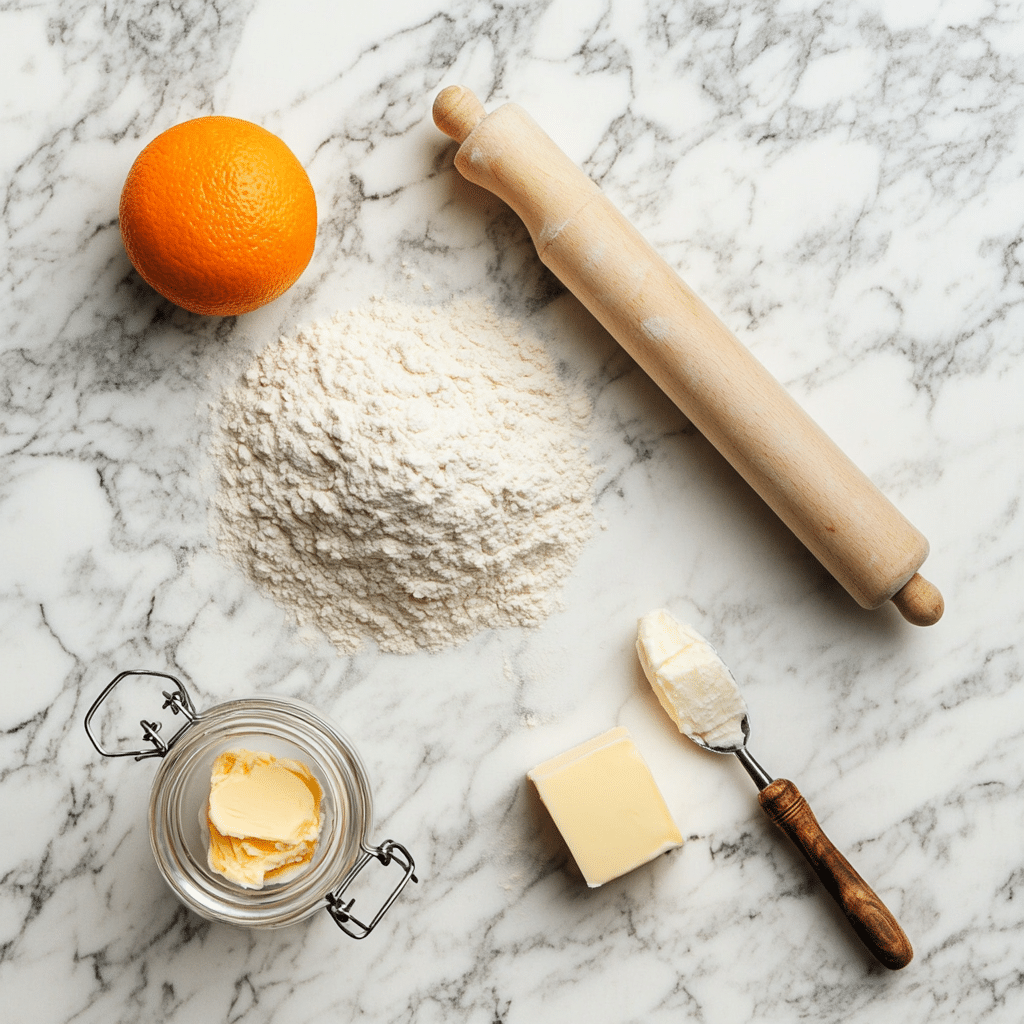I first fell in love with croissant sourdough bread on a misty Mendocino morning, when I tried blending my trusty starter, Clementine, into buttery croissant dough. The result? A flaky, tangy pastry that balanced crisp layers with a depth only natural fermentation can bring. In this article, we’ll explore how to make these irresistible sourdough croissants, blending technique, flavor, and artisan charm—all with an easy-to-follow approach. Whether you’re a curious beginner or a seasoned baker, you’ll find guidance, inspiration, and a few surprises along the way.
Discovering the Magic of Croissant Sourdough Bread
The baker’s connection: from boule to croissant
I still remember the first time I twisted croissant dough around threads of my bubbly sourdough starter. I’d spent years teaching sourdough techniques (like in my guide to Low FODMAP Sourdough Bread), and I thought I knew everything about fermentation. Yet, the moment that starter-infused dough folded into buttery layers, baked in my wood-fired mini-oven, I felt like I’d learned a new language in the world of bread. Those tangy, crisp layers were a revelation—croissant texture meets sourdough depth. That’s when croissant sourdough bread became more than a hybrid; it became a personal obsession.
Why sourdough makes a better croissant
Traditional croissants rely on commercial yeast for lift and buttery layers, but adding sourdough starter brings additional benefits. Natural fermentation develops complex flavors—mild acidity, nuttiness, and lingering sweetness—that you can’t replicate with sugar or yeast alone. Plus, using sourdough increases digestibility, much like my recipe for Sourdough Bread Guide: 7 Health Benefits + Proven Tips outlines. You get a more nuanced taste profile and better shelf life—perfect for making weekend treats or sharing at one of my bakery’s open-mic “bread chats.” It’s not just a twist on tradition; it’s a transformation.
Print
- Total Time: 12 hours 20 minutes
- Yield: 8 croissants 1x
- Diet: Vegetarian
Description
A tangy, flaky twist on a classic French pastry. These croissant sourdough breads are naturally leavened, deeply flavorful, and irresistibly crisp.
Ingredients
250g all-purpose flour
50g bread flour
100g active sourdough starter (fed 8 hours prior)
130g cold water
30g sugar
6g salt
150g unsalted butter (for lamination)
1 egg (for egg wash)
Instructions
1. Mix flours, starter, water, sugar, and salt. Rest for 30 minutes.
2. Knead gently, then chill dough for 1 hour.
3. Prepare 150g butter into a flat, cold slab.
4. Enclose butter in dough and roll into a rectangle.
5. Perform 3–4 book folds, resting dough in fridge between folds.
6. Chill overnight for slow fermentation.
7. Roll out dough and cut into triangles. Shape into croissants.
8. Proof for 2–3 hours at 24°C until slightly puffy.
9. Brush with egg wash. Bake at 200°C for 18–20 minutes.
10. Cool on wire rack. Serve warm or store at room temp.
Notes
Use a strong, bubbly starter at its peak.
Ensure butter stays firm throughout lamination.
To freeze, cool baked croissants fully and store in airtight container.
- Prep Time: 12 hours
- Cook Time: 20 minutes
- Category: Baking
- Method: Sourdough Fermentation
- Cuisine: French-American
Nutrition
- Serving Size: 1 croissant
- Calories: 310
- Sugar: 3g
- Sodium: 190mg
- Fat: 17g
- Saturated Fat: 10g
- Unsaturated Fat: 6g
- Trans Fat: 0g
- Carbohydrates: 35g
- Fiber: 1g
- Protein: 5g
- Cholesterol: 40mg
Keywords: croissant sourdough bread, sourdough croissant, laminated dough
How to Shape and Laminate Croissant Sourdough Bread
Mastering the fold: shaping croissant sourdough dough
Rolling out croissant sourdough bread dough with the right strength—and patience—is key to perfect layers. Use your starter when it’s at peak activity (around 8–10 hours after feeding). After mixing flour, water, starter, salt, and a bit of sugar, rest the dough for 30 minutes. Then you’ll roll in cold butter using the classic “book fold” method. Be sure you chill the butter block and dough before each turn—this keeps the butter firm and prevents melting. Three to four turns will give you those signature flaky layers.
Temperature, timing, and proof
The proofing stage for croissant sourdough bread demands both time and temperature control. After folding, chill the dough overnight at 4 °C. The slow, cold proof allows the sourdough to develop flavor while the butter stays firm. When ready, shape the croissants, proof for 2–3 hours at around 24 °C, or until the dough feels slightly puffy. Use the “poke test”: gently press—when the dough springs back slowly, it’s ready. Finally, bake at 200 °C for ~18 minutes until golden and crisp.

Flavor Enhancements & Serving Tips for Croissant Sourdough Bread
Adding flavor twists
Once you’ve mastered the basic croissant sourdough bread, feel free to experiment with fillings or flavor boosters. Before your final shaping, try brushing the dough with a thin layer of honey-water and sprinkling toasted almonds—this adds a gentle sweetness and crunch. If you prefer savory, tuck in thin slices of aged cheese or a sprinkle of cracked black pepper with herbs. For a seasonal twist, swirl in cinnamon-sugar in one fold. Each addition interacts with the tang of the sourdough, creating layers of flavor that surprise and delight—just the sort of twist you’d love at a bread chat in my bakery.
Serving, storing, and toasting
Warm croissants fresh from the oven are magical, but you can keep that feeling going. Store cooled croissants in a paper bag at room temperature for up to 2 days to preserve crispiness. For longer storage, freeze in an airtight container and reheat at 180°C for 10 minutes before serving. Toasting is absolutely fine—toast at low–medium heat to refresh layers and heighten aroma. This works beautifully when toasted croissant sourdough bread meets melted cheese or spreads like cultured butter, preserves, or savory tapenade. Bodybuilders and fitness fans, in particular, often enjoy toasted sourdough for its texture and nutrient-friendly digestibility—it’s satisfying, slow-release, and easy on the gut.

Variations, Troubleshooting & Baking Confidence
Play with dough: variations & dietary adaptations
Now that you’ve nailed the classic croissant sourdough bread, feel free to explore. Swap part of the white flour for whole wheat or spelt to add earthiness and nutrition—just be mindful of hydration adjustments. For a lower-gluten option, consider using spelt or even emmer in a small proportion. These grains add a nutty sweetness and pair beautifully with sourdough tang, as detailed in my Sourdough Bread Guide: 7 Health Benefits + Proven Tips quickusarecipe.com+3quickusarecipe.com+3quickusarecipe.com+3. If you or your readers follow a sensitive-digestion or IBS-friendly diet, this milder-flour version also complements my Low FODMAP Sourdough Bread recipe quickusarecipe.com+3quickusarecipe.com+3quickusarecipe.com+3.
Troubleshooting common dilemmas
Sometimes things don’t go as planned. If your croissants spread instead of holding shape, your dough and butter may have warmed too much—next time, rest everything in the fridge between folds. On the other hand, if they feel dense, your starter might be underactive or proofing too briefly. For stronger fermentation, feed the starter more frequently, and try a longer cold proof. Refer back to the fermentation strategies in my low FODMAP guide—those principles apply here too quickusarecipe.com+1quickusarecipe.com+1. Lastly, crisp a bit of extra crunch by brushing croissants with butter as soon as they come out of the oven, then return them for 2 minutes on a low rack—ideal toasting technique included!
Frequently Asked Questions
Are sourdough croissants healthy?
Yes! Like sourdough bread, sourdough croissants offer better digestibility thanks to natural fermentation. The process lowers phytic acid, making minerals more absorbable and easing digestion. Just remember, croissants are still buttery pastries—so enjoy in moderation.
What’s the difference between croissants and sourdough croissants?
Traditionally, croissants rely on commercial yeast. Sourdough croissants substitute with a mature starter, adding a tangy depth, improved texture, and a longer shelf life. The flavor becomes more complex and nuanced.
Is it OK to toast sourdough bread?
Absolutely! Toasting croissant sourdough bread brings back that freshly baked aroma and enhances crispness. Toast at low-to-medium heat so layers steam, refresh, and become delightfully crunchy without drying out.
Why do bodybuilders eat sourdough bread?
Bodybuilders often choose sourdough for its nutrient-rich profile and easier digestion. It offers a slower release of carbohydrates, helping sustain energy. Toasted sourdough also pairs well with high-protein toppings, making it an ideal post-workout or muscle-building snack.

Conclusion
In this guide, we’ve explored the magic of croissant sourdough bread—from the story behind the twist, to lamination, flavor adaptations, troubleshooting, and expert tips. These croissants deliver layers of texture, tang, and tradition with each bite. Try making them in your kitchen, and use the linked resources to deepen your craft—from sourdough health benefits to low-gluten or low-FODMAP tweaks. Baking is about exploration and joy, and this recipe invites both. I can’t wait to hear how yours turn out—let’s keep mixing, learning, and sharing that comfort we find in every flaky tear and fermented crumb.

